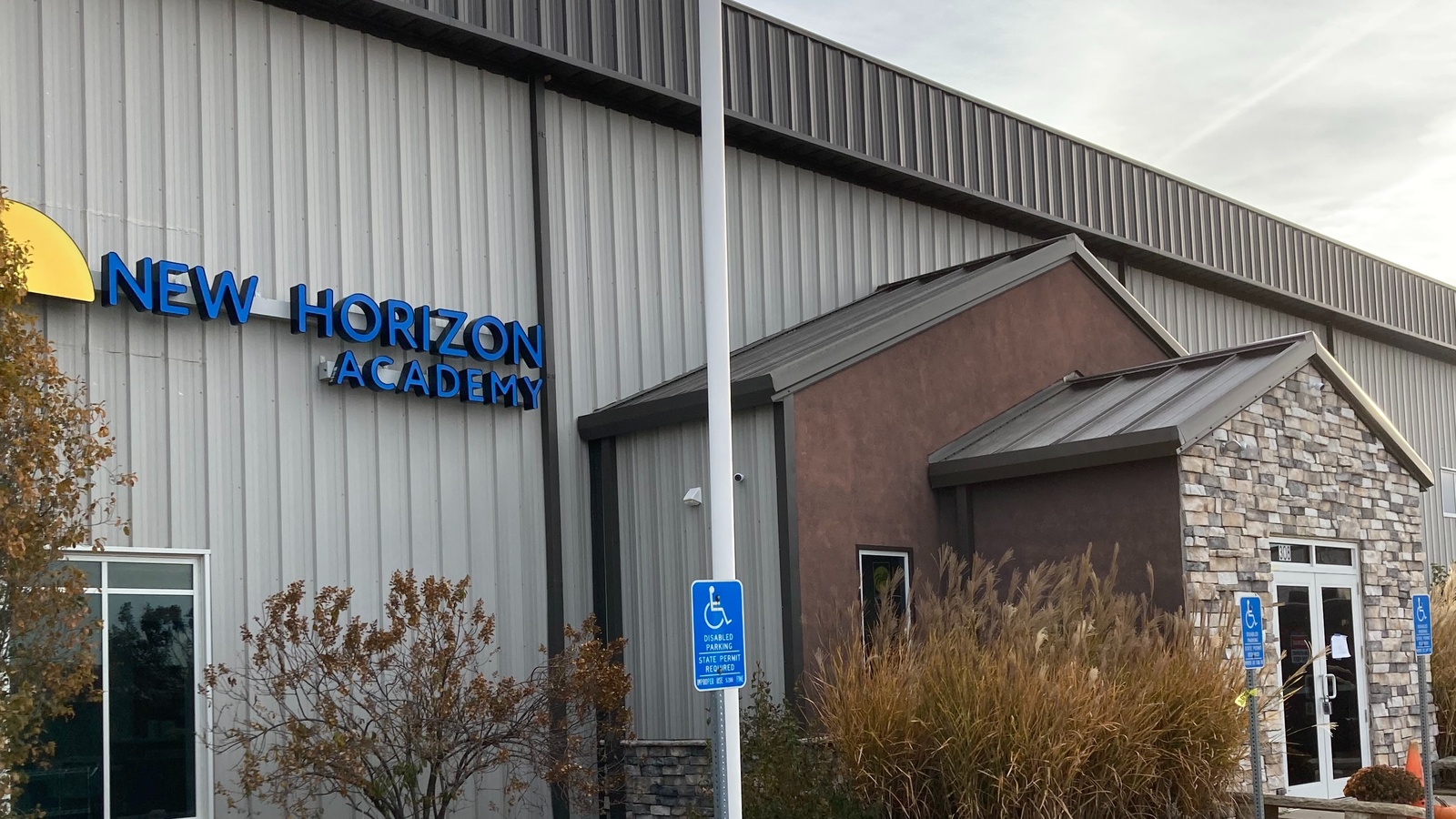“Mountaire Cares” Is More Than Just a Slogan
“Making a difference” might be the best description of what Mountaire Farms does. Founded in 1914, the fifth-generation family-owned chicken processing company has a long history of helping its communities thrive.
Mountaire Cares: Through its Mountaire Cares program, the company’s employees are committed to changing lives for the better.
- “The Mountaire Cares program was created to fulfill three main core pillars: how are we faithful to our people, how are we faithful to our communities and how can we look to be faithful to the future,” said Mountaire Cares Director JR LaPearl.
Meals for thousands: One of Mountaire Farms’ biggest events during the year is its Meals for Thousands program, where the company partners with local churches, food banks and nonprofit organizations to provide meals for families in need at Easter, Thanksgiving and Christmas.
- The program had humble beginnings 28 years ago, with Roger Marino, who was PR and community relations director at Mountaire, leading the group to provide 300 meal boxes at Thanksgiving. The company has distributed more than 1 million boxes since then.
- For this year’s Easter event, the company’s employees and other volunteers packed 15,000 meal boxes, each of which contained a Mountaire roaster chicken; vegetables; macaroni and cheese; mashed potatoes and gravy; and brownies—enough food to feed a family of four.
- “Our employees really enjoy being a part of this effort to give back to the community,” LaPearl said. “What I love about these events is that they bring people together to share love and kindness to one another.”
Feeding all year long: But hunger doesn’t just exist during holidays. Mountaire Farms donates chicken to local food pantries every month so they can help fill the need all year long. And they partner with groups like nonprofit organizations, little leagues, fire companies and more that use chicken to help fundraise during the year.
And that’s not all . . . Mountaire’s food programs are just one way the company gives back. It has partnered with Habitat for Humanity and several Boys & Girls Clubs on service projects, while also collaborating with local schools on renovations of playgrounds and basketball courts.
Why they do it: For LaPearl, it all starts with the company’s mantra “High Performance for a Higher Purpose,” striving to be a positive light to those around them.
- “Our people are the reason we’re able to do what we do and give back,” said LaPearl. “If it’s not volunteering, it’s the everyday work that we do that really helps to feed families here locally, around the region and around the world. It’s interesting when our employees are upset they were unable to volunteer on a particular day. I remind them that what you’re doing on a daily basis is making a major impact in the lives of people that you don’t even know because of your hard work and performance.”
- “When I have the opportunity to visit our processing plants and I see people smiling, singing in their respective cultural languages and just enjoying their job, that speaks volumes in today’s culture. I can tell they love being here. That’s the way we’re built.”
Mountaire cares about its employees: Through Mountaire Cares, the company offers leadership classes to help employees succeed in their roles and advance in their careers. It also provides scholarships to children and grandchildren of employees.
- In addition, the company built medical facilities at each of its processing plants, and recently established a chaplaincy program that offers employees guidance in times of crisis and high stress.
The last word: LaPearl has some advice for manufacturers who may want to start a program similar to Mountaire’s:
- “Clearly understand your strengths as a company and create an exceptional foundation to build off that. We weren’t able to do all of this overnight, so start small and really focus the first few years on going slow and being purposeful. And always show your employees you care.”
“Mountaire Cares” Is More Than Just a Slogan

“Making a difference” might be the best description of what Mountaire Farms does. Founded in 1914, the fifth-generation family-owned chicken processing company has a long history of helping its communities thrive.
Mountaire Cares: Through its Mountaire Cares program, the company’s employees are committed to changing lives for the better.
- “The Mountaire Cares program was created to fulfill three main core pillars: how are we faithful to our people, how are we faithful to our communities and how can we look to be faithful to the future,” said Mountaire Cares Director JR LaPearl.
Meals for thousands: One of Mountaire Farms’ biggest events during the year is its Meals for Thousands program, where the company partners with local churches, food banks and nonprofit organizations to provide meals for families in need at Easter, Thanksgiving and Christmas.
The program had humble beginnings 28 years ago, with Roger Marino, who was PR and community relations director at Mountaire, leading the group to provide 300 meal boxes at Thanksgiving. The company has distributed more than 1 million boxes since then.
- For this year’s Easter event, the company’s employees and other volunteers packed 15,000 meal boxes, each of which contained a Mountaire roaster chicken; vegetables; macaroni and cheese; mashed potatoes and gravy; and brownies—enough food to feed a family of four
- “Our employees really enjoy being a part of this effort to give back to the community,” LaPearl said. “What I love about these events is that they bring people together to share love and kindness to one another.”
Read the full story here.
NAM Campaign: Reform PBMs to Help Employers, Workers

Update: The National Association of Manufacturers has called on congressional leadership to support and advance legislation aimed at reforming the pharmacy benefit manager market in a later dated November 7th. Click here to read the letter. Click here to take action.
Pharmacy benefit managers—companies that were first established to manage the cost of prescription drugs—are contributing to soaring health care costs and driving up the price of medications. These entities cannot go unchecked, and Congress must act, an NAM ad campaign launched Thursday is advocating.
What’s going on: The campaign, which includes both TV and digital ads, calls out PBMs—“middlemen owned by large health insurers”—for pocketing sizeable discounts from drug manufacturers rather than passing on the discounts or rebates to workers or employers.
- “America’s manufacturing workforce has struggled with skyrocketing health care costs driven by insurer-owned PBM middlemen for far too long,” said NAM President and CEO Jay Timmons.
- “Manufacturers are committed to providing quality health care benefits to our employees, so we need reforms to stop insurer-owned PBMs from keeping discounts and driving up prescription drug costs.”
Why it’s important: PBMs emerged in the late 1960s as a way of helping insurance companies and employers contain spending on prescription medications—but their business model has evolved significantly in the past half-century.
- Now just a few PBMs—subsidiaries of bigger health care firms—control up to 89% of the prescription drug market and operate with limited federal oversight.
- And they exert even more control in the industry by steering business toward specific pharmacy networks, frequently ones owned by their parent companies.
Congressional moves: Congress is considering various legislative solutions to address PBM rebate, fee and payment structures.
The last word: “Manufacturers support reforms to the PBM model that increase transparency, ensure pharmaceutical savings are passed from the PBM to workers and plan sponsors and delink PBM compensation from the list price of medication,” said NAM President and CEO Jay Timmons. “Congress must reform the PBM system so employers can negotiate, compete and achieve profit savings.”
NAM in the news: POLITICO’s Influence newsletter highlighted the NAM’s campaign.
Tell Congress To Reform PBM’s Today
NAM Launches Six-Figure Campaign Calling on Health Care Middlemen to Pass Prescription Discounts to Workers and Employers
Washington, D.C. – The National Association of Manufacturers has launched a six-figure television and digital advertising campaign calling for reforms to ensure pharmacy benefit managers pass on prescription drug discounts directly to workers and employers. The campaign spotlights how these insurer-owned middlemen are contributing to skyrocketing health care costs and driving up the cost of medicines by pocketing big discounts from drugmakers instead of passing them on to America’s workforce.
“America’s manufacturing workforce has struggled with skyrocketing health care costs driven by insurer-owned PBM middlemen for far too long,” said NAM President and CEO Jay Timmons. “PBMs pocket big discounts from prescription drugmakers instead of passing them on to workers and employers. Manufacturers are committed to providing quality health care benefits to our employees, so we need reforms to stop insurer-owned PBMs from keeping discounts and driving up prescription drug costs.”
To view the latest television ad, click here.
-NAM-
The National Association of Manufacturers is the largest manufacturing association in the United States, representing small and large manufacturers in every industrial sector and in all 50 states. Manufacturing employs nearly 13 million men and women, contributes $2.90 trillion to the U.S. economy annually and accounts for 55% of private-sector research and development. The NAM is the powerful voice of the manufacturing community and the leading advocate for a policy agenda that helps manufacturers compete in the global economy and create jobs across the United States. For more information about the NAM or to follow us on Twitter and Facebook, please visit www.nam.org.
What’s Going on with Title 42?

Title 42 has been a fixture in the news in recent days—but what is it and what does its recent end mean? We break it all down here.
What’s going on? Title 42, which went into effect March 2020, was a COVID-19-era policy that allowed the U.S. to expel migrants for health reasons. Under it, more than 2.6 million people were sent back to their home countries, according to The Washington Post (subscription).
- Now that Title 42 has concluded, authorities are only permitted to expel individuals using Title 8, pre-pandemic immigration rules, The New York Times (subscription)
What should we expect? Though an expected weekend “surge” in border crossings did not materialize—in fact, there was a 50% drop in the three days ending Monday, according to the Associated Press—“the number of crossings is still exorbitantly high, with U.S. Customs and Border Protection stopping more than 10,000 immigrants per day this week, the highest levels ever,” the Washington Examiner reports.
- And southern border communities remain on “high alert” for a potential near-term spike in migrant crossings, according to CNN.
How is the administration addressing the change? The Department of Homeland Security—which has issued a proposed rule on asylum—put out a six-pillar plan to address an influx of migrants at the southern border. The measures aim to:
- Increase resources, personnel, transportation and medical support and facilities;
- Bolster CBP processing efficiency;
- Move quickly to mitigate potential overcrowding of CBP stations and alleviate the burden on the surrounding border communities;
- Administer consequences for unlawful entry, including removal, detention and prosecution;
- Boost the capacity of nongovernmental organizations to take in migrants following processing by CBP, during the wait for results of their immigration removal proceedings;
- Target and disrupt the criminal organizations and smugglers that profit off vulnerable migrants and seek to move illegal drugs into the U.S.; and
- Collaborate with international and federal authorities to deter undocumented migration.
What’s Congress doing? The House passed a border package, the Secure the Border Act of 2023, the day Title 42 expired.
- The House measure—which the White House has said it would veto—“would mandate that Customs and Border Protection hire enough Border Patrol agents to maintain a staff of 22,000 and develop a plan to upgrade existing technology to make sure agents are well-equipped. It also would require the homeland security secretary to resume construction of the border wall,” according to NBC News.
- The Senate has two proposals to secure the border. One, by Sens. Thom Tillis (R-NC) and Kyrsten Sinema (I-AZ), would give the U.S. temporary authority to expel for two years migrants who try to enter illegally or without proper documents. The other, the Securing Our Border Act from Sen. Tim Scott (R-SC) and others, would fund “nonintrusive border inspections” and border-wall construction, as well as retention bonuses for CBP agents, and would end the current “catch and release” policy.
What’s the NAM doing? The NAM continues to advocate immigration reform through “A Way Forward,” its immediately implementable policy blueprint for legislators, meetings with key congressional leaders, member-story and news coverage (see here, here and here for a few examples), the Competing to Win Tour and more.
NAM Urges Rejection of PRO Act

The NAM is opposing the reintroduction of legislation that would institute “card check” and other labor policies harmful to manufacturers.
What’s going on: A coalition of nearly 100 organizations including the NAM urged Congress last week to reject the Protecting the Right to Organize Act, introduced in the House in February by Rep. Robert C. Scott (D-VA).
- “This bill would limit workers’ right to secret ballot elections, trample free speech and debate, jeopardize industrial stability, threaten vital supply chains, limit opportunities for small businesses and entrepreneurs, cost millions of American jobs and greatly hinder the economy,” they told Congress.
What’s in it: This legislation would significantly worsen—not improve—conditions for employees, the coalition argued. It would:
- Limit workers’ free speech and remove the right to vote via secret ballots.
- Hand confidential worker information over to unions without employee consent.
- Allow unions to choose bargaining units that maximize their chances of winning elections.
- Eliminate right-to-work laws.
- Allow intermittent strikes and remove bans on unions boycotting companies that do business with those engaged in an active labor dispute.
The cost: “The economic impact of the PRO Act would be catastrophic,” the coalition continued, citing one study which “found that the bill’s independent worker reclassification provision alone could cost as much as $57 billion nationwide, while the joint-employer changes would cost franchises up to $33.3 billion a year, lead to over 350,000 job losses, and increase lawsuits by 93%.”
In the spotlight: Many provisions of the PRO Act were raised during a hearing Wednesday of the Senate Health, Education, Labor and Pensions Committee chaired by Sen. Bernie Sanders (I-VT)—demonstrating that this issue and this legislation will remain a top priority for him and others in the Senate.
Pella Corp. Takes a “Holistic” Approach to Work

Pella Corp. does more than make windows and doors; it has helped create a welcoming, pleasant community in its namesake Iowa town.
To help attract and retain workers, the privately held, family-owned, 98-year-old company and its shareholders are investing in a number of crucial amenities and services, including child care, housing and dining/entertainment options.
We spoke to Pella Corp. Executive Vice President and Chief Human Resources Officer John Bollman recently, and he told us how it happened.
A great first impression: Prospective hires in need of relocation always get a full tour of the town—and they are always impressed, according to Bollman.
- “People consistently come back [from the tours] and say, ‘Wow, I’m surprised—in a positive way—in the community. It’s a small community, but it’s beautiful and vibrant.’”
- “Pella is a community that takes pride in its heritage and history and the shareholder family has always played a key role in enhancing the community’s appeal,” he added.
How it happened: Several years ago, Pella Corp. President and CEO Tim Yaggi, in a presentation to Pella Corp. shareholders, indicated that different investments were needed to improve local housing, child care and amenities. These upgrades would help the company attract and retain the talent it needed to achieve its long-term growth goals, Yaggi said.
- The shareholder family committed nearly $30 million to these initiatives, which included investment in the construction of a high-end condominium/townhouse complex, as well as a 160-acre development geared toward median-income households.
- They also purchased, remodeled and expanded a local building, turning it into a state-of-the-art daycare facility. In 2021, under the management of national daycare operator New Horizon Academy, the Pella New Horizon Academy opened, serving children aged six weeks through 5 years.
- In addition, they partnered with fellow Pella-based firm Vermeer Corp. to bring Smash Park, a craft-food and entertainment venue, to the town.
- And last, the company helped to establish both a local Chick-fil-A restaurant and Liberty Street Kitchen, one of the community’s fine-dining establishments.
A holistic approach: Pella Corp. knows that when it fills a job at the company, it’s also bringing in new town residents, and that’s a responsibility it takes seriously.
- “When you’re recruiting talent, the company is assessing fit for the role,” Bollman said. “But when it comes to location, our job is to facilitate the ability of the candidate—and if they have a family, the family, too—to determine whether Pella as a community is a good fit.”
- The approach is paying off. One recent key hire had to relocate for the position, and before the family visited the town of Pella, they were certain they wanted to live in larger Des Moines, about an hour away. “But because they were able to find good child care and housing, they decided to live in Pella,” Bollman said.
Meeting parents’ needs: The high cost and low availability of child care is an enormous burden on families, so it’s no surprise that the affordably priced, high-quality Pella New Horizon Academy is highly sought after.
- The center, which is currently at capacity at 140 children and has a waitlist of about 50, is open to all. Nearly a third are Pella Corp. employees’ kids, according to Bollman.
- “We wanted to invest in child care for our team members and our broader community,” he said.
- The cost is 35-40% less than the average price of daycare in Des Moines, according to Bollman.
Onward and upward: Pella Corp. has big plans for its child-care initiative, says Bollman. If it can expand its staff, “we could go to 194 enrolled kids, and with some additions to the building, that could go to 225.”
- He has no doubt that the center will easily fill those spaces. “Everyone I’ve talked to that has a child at the center is just over the moon.”
Ultragenyx Fights for Cures Amid Rising R&D Costs

About 30 million people in the United States have a rare disease, according to the National Institutes of Health, which equates to about one in every 10 individuals. Approximately 95% of these rare diseases have no treatment at all—and Ultragenyx, a biopharmaceutical company focused on new and effective therapies for patients with rare and ultra-rare diseases, is working to change that.
- “In the aggregate, rare is not that rare,” said Ultragenyx Executive Director of Public Policy and Public Affairs Lisa Kahlman. “Half of those 30 million people are children. It’s a huge unmet medical need.”
Founded in 2010, Ultragenyx has four commercial products, with about 20 more in pre-clinical and clinical development. But a new change in tax policy poses a very real threat to Ultragenyx’s ability to develop as many treatments for rare diseases as possible.
The issue: Until a year ago, businesses could deduct 100% of their R&D expenses in the same year they incurred the expenses. Starting in 2022, however, a tax policy change requires businesses to spread their R&D deductions out over a period of five years, making it more expensive to invest in growth and innovation. For research-heavy companies like Ultragenyx, that change could divert funds intended for the development of therapies toward tax obligations.
- “Ultragenyx is different,” said Kahlman. “There are a lot of companies that do some work in rare diseases, but usually that’s only a fraction of what they do. We’re exclusively built to focus on rare and ultra-rare diseases, and that requires research.”
The impact: As a small, largely precommercial start-up company that focuses on research, Ultragenyx spends about 70% of its total operating expenses on R&D. In 2021, Ultragenyx spent approximately $497 million on R&D—nearly $150 million more than it earned in revenue.
- If the tax change stands, the company’s financial statement losses, which approximate decreases in the company’s cash reserves, will be adjusted for tax purposes to reflect significant taxable income, resulting in very large tax liabilities over a short period of years.
- This will occur during late stages of the company’s development programs just when costs escalate quickly. Altogether, money will be diverted to taxes and away from critical development programs at precisely the wrong time.
The human cost: If Ultragenyx and other research-heavy biotech companies that are focused on developing treatments for rare diseases must divert funds away from development and toward covering tax obligations, patients living with rare diseases will have even more limited options.
The bottom line: “The therapies we’re developing are really transformational, but in some cases, there might be only about 200 patients in the developed world with one of these diseases—so if we don’t have the money for R&D, there won’t be any incentive for anyone else to develop treatments,” said Kahlman. “For these patients, there is no alternative.”
Our move: At the NAM, we’re pushing Congress to reverse this change and allow manufacturers to invest in jobs, communities and innovation. Learn more and take action at www.nam.org/protect-innovation.
Watch: Timmons Talks Workforce on CBS
NAM President and CEO Jay Timmons joined CBS Mornings today to discuss manufacturing’s number one challenge: finding enough skilled workers to fill available jobs.
Manufacturers Support Aid for Eastern Europe

It’s been nearly a year since Russia’s invasion of Ukraine, but NAM partner Project HOPE hasn’t let up on its humanitarian aid efforts. With the generous support of many NAM members, it has helped tens of thousands of people who have seen their lives torn apart by the conflict.
What’s going on: Project HOPE—the global health and humanitarian aid organization on the ground providing relief in Ukraine and supporting refugees in Poland, Romania and Moldova—is delivering millions of dollars in medicines, medical supplies, trauma care training, mental health assistance and more to those in need.
What’s been accomplished: To date, the humanitarian relief organization has:
- Delivered 24 generators to health facilities and 34,000 hygiene kits and nonfood items in Ukraine;
- Launched 10 mobile medical units that have treated more than 35,000 patients in Eastern Europe;
- Partnered with 13 local organizations in Eastern Europe to support emergency response;
- Helped provide medical care to more than 5,800 Ukrainian refugee children in Poland;
- Provided nine child playrooms in Moldova that have provided services to more than 3,750 Ukrainian refugee children; and
- Donated more than 300 wheelchairs and other mobility equipment to refugees and others living with disabilities in Romania and Ukraine.
Helping those in need: “Manufacturers are committed to giving back: saving lives, protecting communities and responding quickly in times of trouble,” said NAM Emergency Response Committee Co-Chair and Senior Director of International Trade and Regulatory Affairs Ryan Ong.
- “That includes efforts to stand with the people of Ukraine through strong support to those providing badly needed help in the region. That’s why we’ve been pleased to support and partner with Project HOPE, which is making a difference on the ground.”
The last word: “We are so grateful for the support of the NAM community who has been an integral partner in our Ukraine response,” said Project HOPE Executive Vice President of Global Health Chris Skopec.
- “As we approach the one-year anniversary of the Russian invasion of Ukraine, we at Project HOPE remain committed to continuing to deliver medicines, medical supplies, mental health support and other urgent assistance for the people of Ukraine.”
Get involved: If you’d like to donate to those in need in Ukraine and the region, you can do so via the NAM’s partnership with Project HOPE. For more information about NAM efforts or to share what your company is doing, contact the NAM Emergency Response Committee at [email protected].
